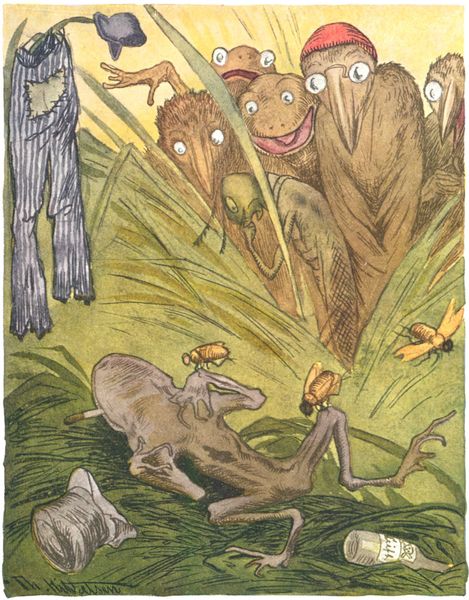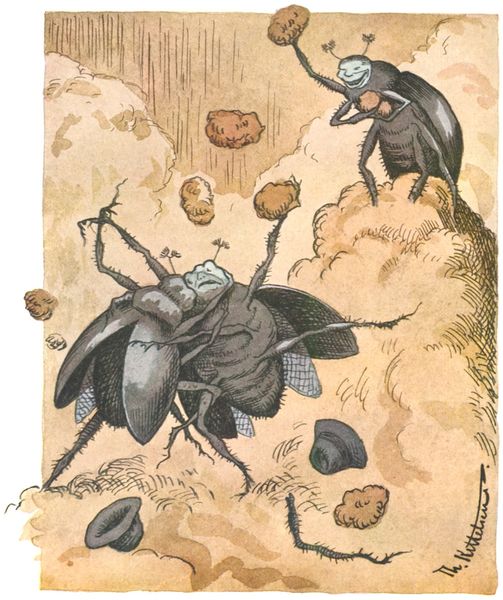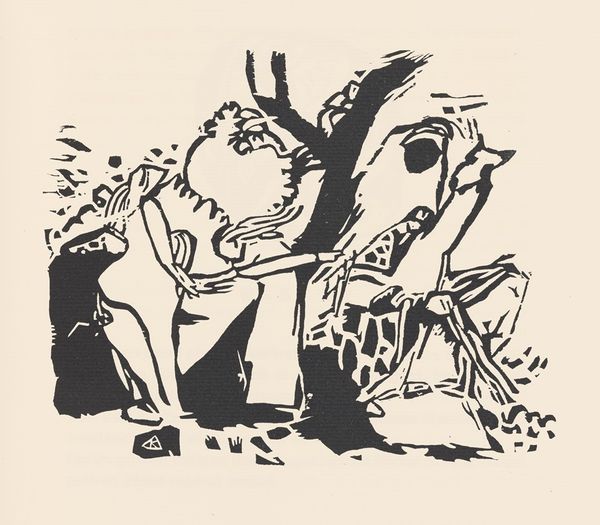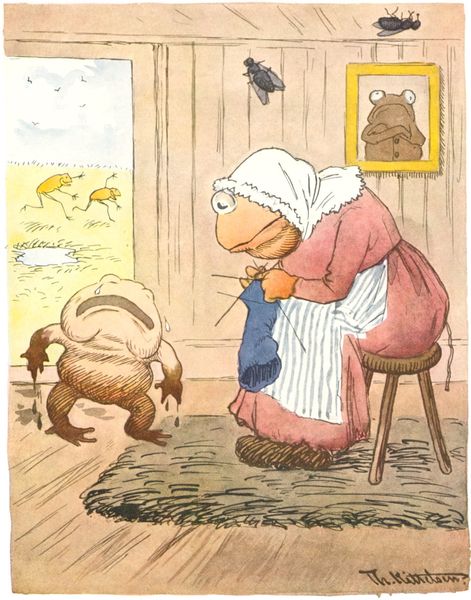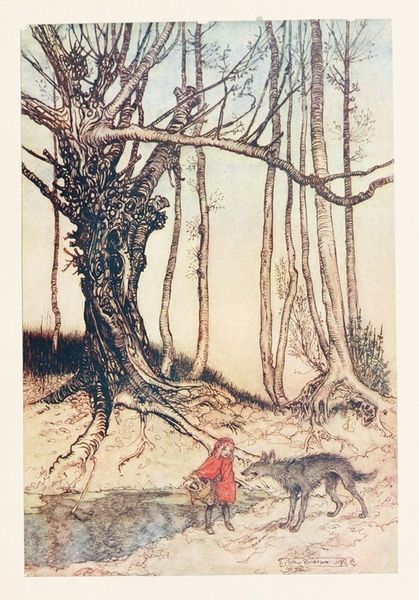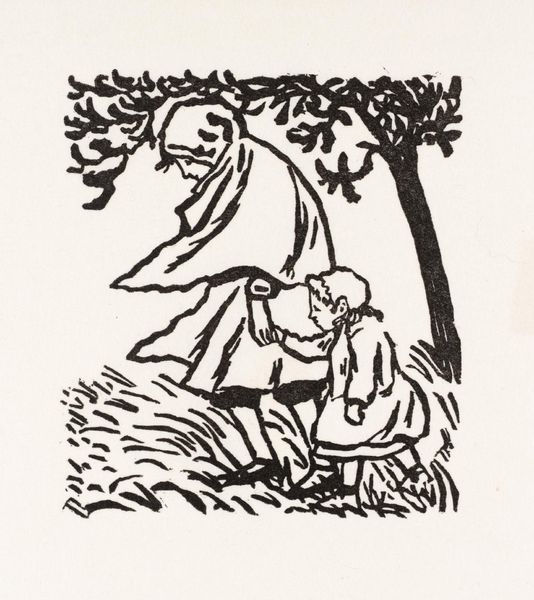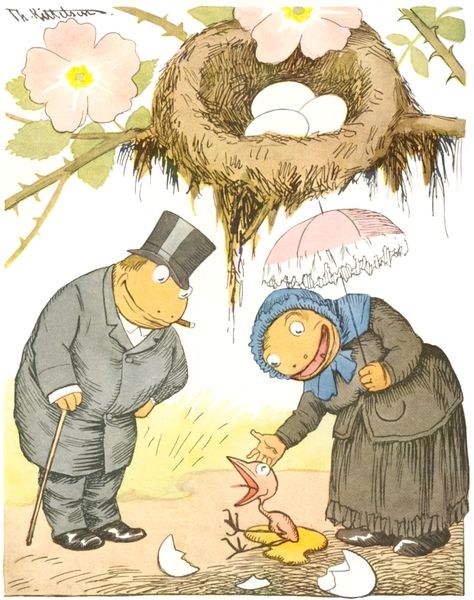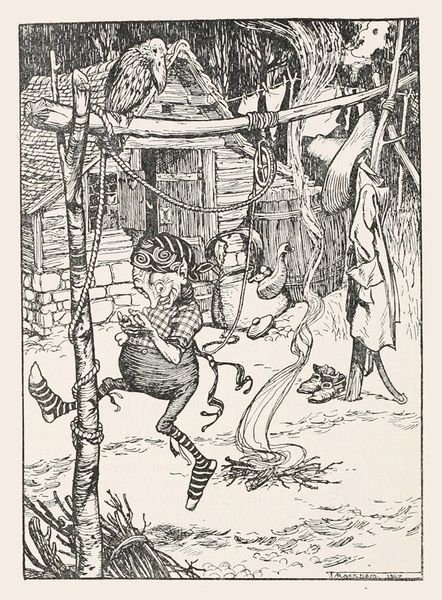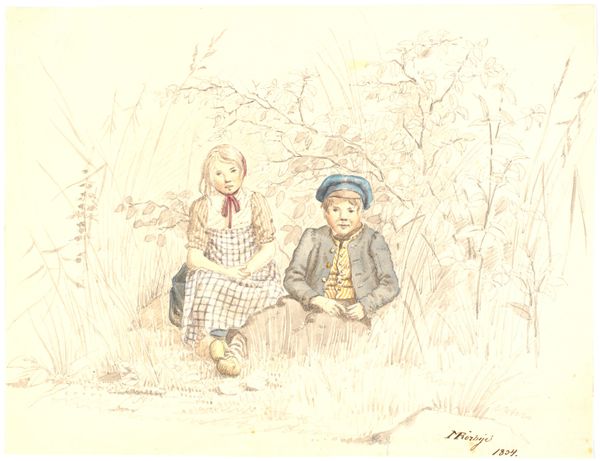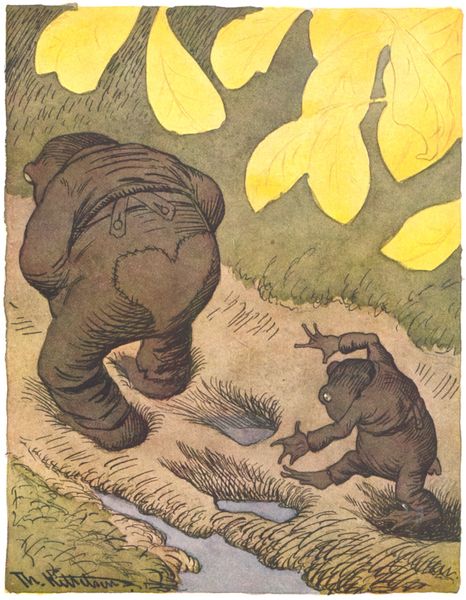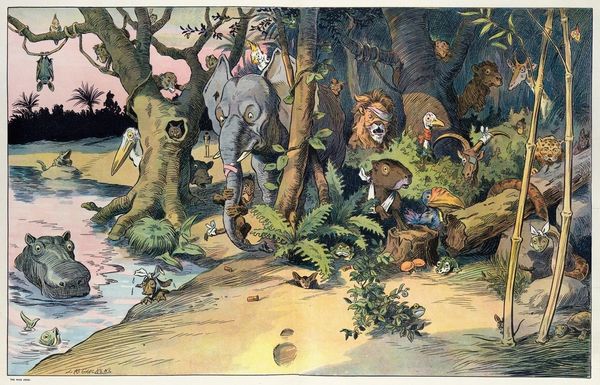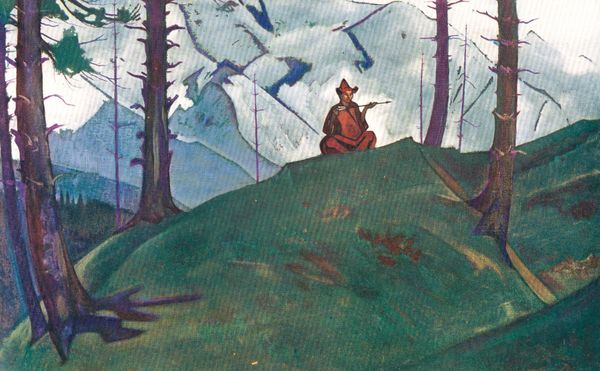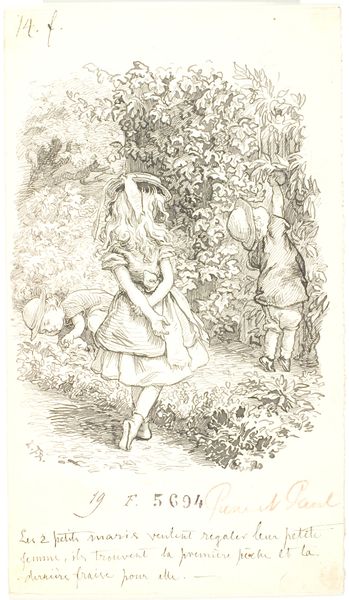
Copyright: Public domain
Editor: So, this whimsical piece is Theodor Kittelsen's "Flea hunting in ancient forest," made around 1894, using watercolor. It immediately strikes me as unsettling yet humorous, especially with those exaggerated characters. What's your take on this unusual scene? Curator: The humour is certainly present, but consider the context. Kittelsen was Norwegian, and deeply concerned with national identity and folklore. What looks like simple caricature might be a coded commentary on the relationship between different societal groups or even nations at the time, filtered through the lens of Norwegian mythology. Do you see any symbolism here? Editor: Well, the flea, obviously, could represent something irritating or parasitic. But the hunter… a grasshopper riding another grasshopper? It's just so bizarre. Curator: Precisely! What do grasshoppers symbolize culturally? Think about their fleeting nature, their swarming behavior... Also, note the human-like clothing and tools. Kittelsen isn't just drawing bugs; he’s projecting human characteristics onto them. Perhaps it’s about the absurdity of human hierarchies projected onto the natural world? A reflection of societal structures? Editor: That makes so much sense! I was just seeing funny bugs, but the clothes, the flea hunt…it all hints at a much deeper layer of commentary about social classes, even the relationship between Norway and other countries perhaps. Curator: Indeed. Kittelsen invites us to look beyond the surface and recognize these timeless power dynamics at play. Editor: Wow, I never would have considered that. Seeing the potential symbolic reading has given me a whole new appreciation for Kittelsen's intent! Curator: Exactly. Symbols, though seemingly simple, often echo through time.
Comments
No comments
Be the first to comment and join the conversation on the ultimate creative platform.
